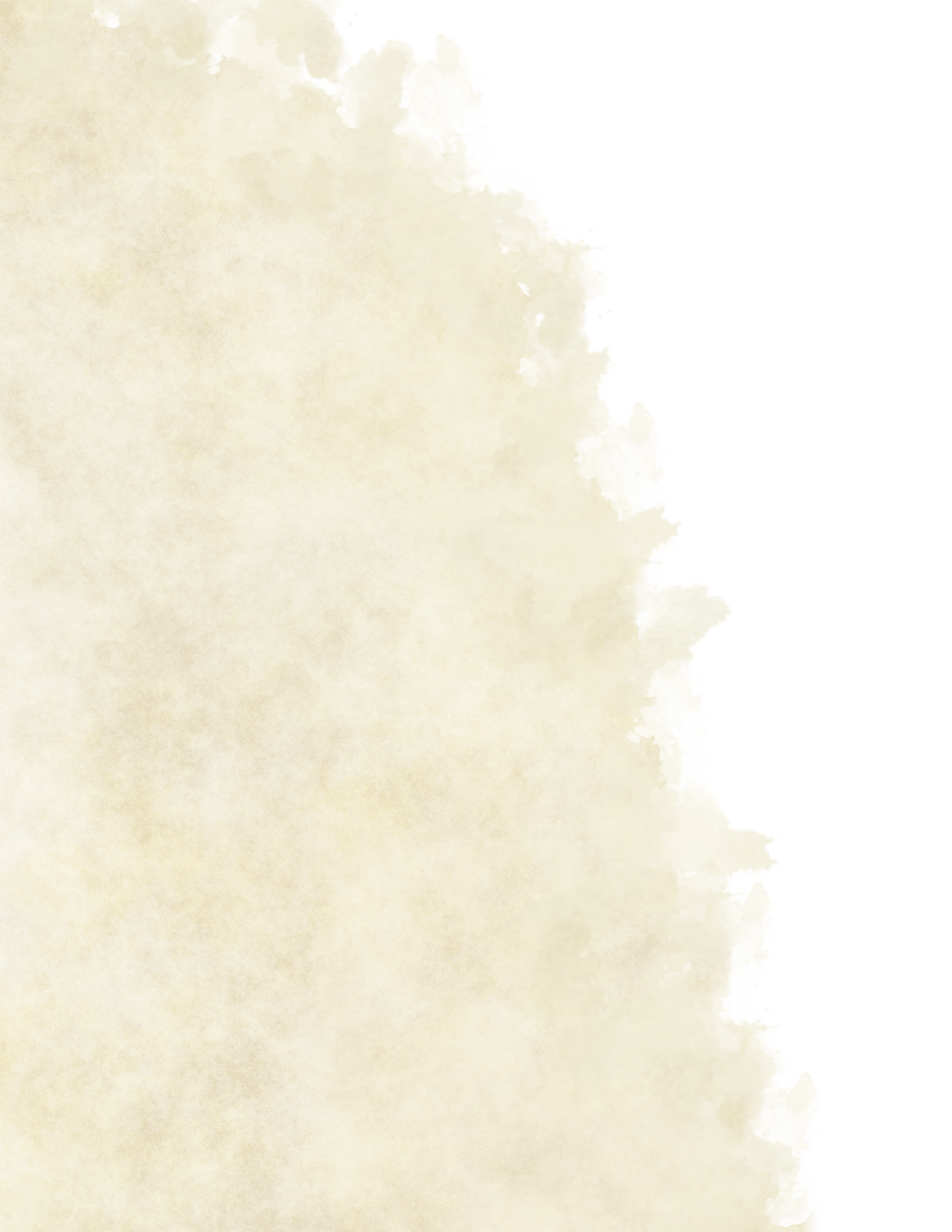The Curse of the Wolfwalker
One of the oldest and perhaps least studied magical afflictions related to Lycanthropy is the curse of the Wolfwalker. Often met with distrust and fear by the regular townsfolk, the Wolfwalkers tend to conceal their affliction, which they do not see as such but are often regarded as a blessing of nature or a higher power. The few existing bands or tribes of Wolfwalkers dwell deep within the forests and avoid all contact with the outside world, which makes them even harder to study. Some hunters reported sightings of wolves with unnatural physical features, showing signs of almost human intelligence, only to never again witness anything similar in the area. The presumed Wolfwalker likely abandoned the region to ensure their pack's secrecy and safety.
Wolfwalker Bloodline
The children born into a tribe of Wolfwalkers have the innate ability to detach their spirit from their mortal body when sleeping or unconscious. The soul assumes the form of a wolf with features often related to the physical appearance of the humanoid form, like their size, hair, or eye color. This ability is usually first manifested around the age of three and is considered a celebratory occasion within the tribe. Some packs even restrain from naming children before their first transformation to mirror their wolven spirit's features in their given name.
Heredity
The table below shows the likelihood of a child inheriting the Wolfwalker trait in relation to the marker's presence in the parents' genome.
| Wolfwalker father | Unafflicted father | |
|---|---|---|
| Wolfwalker mother | 100% | 80% |
| Unafflicted mother | 50% | 0% |
Children of mixed descent generally first transform at a much later age, sometimes only after receiving spiritual guidance from another, more experienced Wolfwalker. If the first transformation occurs after reaching adulthood, it is generally painful and uncomfortable, as the spirit has already closely bonded to the physical body at this stage. With frequent transformations, the pain fades, and only slight discomfort remains as the body adapts to the condition.




Transmission
The condition is spread through contact with most bodily fluids, often due to saliva entering a bite wound. Sweat and tears are not known to act as transmitters. Because of this, female Wolfwalkers are far more likely to pass the condition to their children, even if the father is unafflicted, as the child shares in the mother's blood.
The first transformation of an individual who contracts the trait is excruciatingly painful, just as it is for hereditary Wolfwalkers, who first transform later in life. In isolated cases, the spirit fails to separate from the body properly, resulting in instant death. Generally, the first transformation occurs between a week and a month after transmission. Subsequent shifts are usually painless but still unsettling to the new Wolfwalker.
Breaking the curse
Once contracted, the condition can not be cured through traditional means. In literature, the affliction is thus often classified as a curse. Few people ever get to see a Wolfwalker; even fewer are close enough to contract the trait. Most of the remaining Wolfwalkers inherit the condition, are raised with it, and thus take great pride in their heritage and traditions. For this reason, there are no records of a hereditary Wolfwalker ever seeking to rid themselves of this affliction. There have, however, been rumors about a cleric breaking the curse laid on a high-born noble after getting involved with a peculiar woman. Said cleric thus was able to prevent a vast scandal.
Aspects
Contrary to Lycanthropes, Wolfwalkers are not affected by outside factors such as moon phases or emotional triggers. Instead, a Wolfwalker has two forms, either of which may be taken on willingly. During transformation, the spirit leaves the humanoid body, the primary aspect of the Wolfwalker, and assumes another quasi-physical form, the secondary aspect.
Primary Aspect - Humanoid form
The humanoid form of a Wolfwalker does not display any characteristic differences compared to that of an unafflicted individual. Because of their isolation, hereditary Wolfwalkers can have certain traits not commonly found in the general populace, such as unusual hair or eye color. Some also mark their bodies with pack-specific tattoos as a symbol of their belonging.
Secondary Aspect - Wolf form
After leaving the physical body, the soul of a Wolfwalker assumes the quasi-physical form of a wolf while retaining all mental capabilities of the primary aspect and some of its general appearance. The secondary aspect can interact with the outside world as any material lifeform and is governed by the same laws of nature. Only a skilled observer may tell the difference between a Wolfwalker's secondary aspect and a regular wolf by noticing their intelligent behavior or some unusual physical characteristics.
Relation of the Aspects
A Wolfwalker spends about half of their life in the primary aspect, which acts as an anchor to their spirit, and the secondary aspect. As opposed to Lycanthropes, whose physical body partakes in the transformation, the secondary aspect of a Wolfwalker does not replace their primary form but exists in parallel to it and can not survive without it. After shifting, the soul or spirit of the Wolfwalker retains a connection to their physical body, their primary aspect. The physical distance between the corporeal body and the soul does not matter.
Due to its non-material origin, any damage the wolf form sustains is not transferred to the primary aspect but instead affects only the secondary aspect. A sufficient amount of damage can destroy the form, after which the soul is forced to return to its primary aspect. Switching forms in this manner causes great exhaustion. Any injury sustained by the unconscious corporeal body of the Wolfwalker is transferred to its secondary aspect or the wolf form. Retaining the secondary aspect for an extended time is very tiring. To return to its primary form, the spirit must make physical contact with the humanoid body.
The switching of aspects in itself also requires a lot of energy, thus limiting the maximum number of possible transformations per day. If the Wolfwalker does not exhaust this limit while intentionally transforming during the day, their secondary aspect will be assumed while they sleep. While very useful for keeping watch or exploration, the physical body can not fully rest if the wolf form takes part in combat or other strenuous activity.


Creating a Wolfwalker
The mechanics detailed in this section are not meant to be used as a separate class but as an addition to an existing character. So while the abilities granted by this trait can be useful in-game and fun during roleplay, they are intentionally toned down to keep the game balanced for other player characters.
When creating a Wolfwalker character, you first need to consider whether their condition is hereditary or whether it was contracted, and if so, in what way. Is your character part of a Wolfwalker pack? And if so, where do they dwell, and how do they keep their secrecy? Is there an identifying characteristic marking your character's belonging, and how does their general appearance translate to their wolf form? Perhaps they have been exiled from the pack? Or maybe they are seeking justice for their enemies? Wolfwalkers generally avoid all contact with the outside world, so a good reason is needed for your character to be an adventurer.
Wolfwalker Traits
Your character has certain qualities resulting from the changes to their body resulting from their condition.
Age. Wolfwalkers age at the same rate as their non-afflicted humanoid counterparts. Hereditary Wolfwalkers generally experience their first transformation around age three, while Wolfwalkers who recently contracted the trait first transform between one to five weeks after.
Alignment. Your alignment does not change if you contract the trait. Hereditary Wolfwalkers generally see themselves as outsiders and keep to their own code of honor, often taking a neutral stance towards the rest of the world.
Size. Your size in your primary aspect depends on your humanoid side, while the size of your secondary aspect is Medium, or Small if your character is a child.
Speed. A Wolfwalker's base walking speed in their primary aspect is equal to that of their non-afflicted humanoid counterpart. In their secondary aspect, their base walking speed is 40 feet.
Keen Hearing and Smell. The Wolfwalker has advantage on Wisdom (Perception) checks that rely on hearing or smell.
Howl at the Moon The Wolfwalker's howls can be heard up to a distance of 300 feet and can summon 1d6 regular wolves from the area, after a successfull Persuasion check with a DC of 15. The summoned wolves are friendly to the character and their allies. This ability iss limited to a single use per day. While in wolf form, the Wolfwalker can understand and be understood by wolves.
Pack Tactics. The Wolfwalker has advantage on an attack roll against a creature if at least one of their allies is within 5 feet of it and the ally isn't incapacitated.
Wandering Spirit The connection between the Wolfwalker's corporeal body and spirit is weaker than in regular humanoids. They have disadvantage on all Intelligence, Wisdom, and Charisma saving throws against magic.
Wolfwalking
You can transform from one aspect into another willingly as an action and remain transformed up to a number of hours equal to your level. When changing from the primary to the secondary aspect, your spirit leaves your body and transforms into a wolf, which appears in the nearest unoccupied space. The Wolfwalker can return to their humanoid body by using an action while they're within 5 feet of it. In a single day, you can do so a number of times equal to your proficiency modifier. If the transformation limit is not reached during the day, the Wolfwalker transforms at night for a length of time equal to the sum of the lengths of all unused transformations up to a full rest. The character gains all benefits of a full rest unless the wolf form partakes in any strenuous activity like combat or spellcasting.
While you are transformed, the following rules apply:
- Your game Statistics are replaced by the Statistics of a wolf, but you retain your Alignment, Personality, and Intelligence, Wisdom, and Charisma scores. You also retain all of your skill and saving throw Proficiencies, in addition to gaining those of the wolf. If the wolf has the same Proficiency as you and the bonus in its stat block is higher than yours, use the creature's bonus instead of yours.
- When you transform, you assume the wolf's Hit Points and Hit Dice. In wolf form, your humanoid body is unconscious. Any damage taken by the body is transferred to the wolf. To retain the connection between body and soul, you need to make a Constitution saving throw with a DC of 10. Damage taken by the wolf form is not transferred to the humanoid body. If the wolf form's hitpoints are reduced to zero, it vanishes, and the humanoid body awakens and gains a point of exhaustion. If the humanoid body's hitpoints are reduced to zero, the wolf form also vanishes.
- You can't cast Spells apart from the cantrips listed below, and your ability to speak or take any Action that requires hands. Transforming doesn't break your Concentration on a spell you've already cast, however, or prevent you from taking actions that are part of a spell.
- You retain the benefit of any features from your class, race, or other source and can use them if the new form is physically capable of doing so. However, you can't use any of your Special Senses, like Darkvision, only those of the wolf.


Innate Magic
While the secondary aspect of a Wolfwalker appears and acts as a physical lifeform, it is, in fact, comprised of pure energy, namely the Wolfwalker's soul. By channeling some of this energy, the Wolfwalker can channel some of this energy, thus allowing them to cast the following cantrips while in wolf form:
Spare the Dying
Necromancy cantrip
- Casting Time: 1 action
- Range: Touch
- Components: V, S
- Duration: Instantaneous
You touch a living creature that has 0 hit points. The creature becomes stable. This spell has no effect on undead or constructs.
Druidcraft
Transmutation cantrip
- Casting Time: 1 action
- Range: 30 feet
- Components: V, S
- Duration: Instantaneous
Whispering to the spirits of nature, you create one of the following effects within range:
- You create a tiny, harmless sensory effect that predicts what the weather will be at your location for the next 24 hours. The effect might manifest as a golden orb for clear skies, a cloud for rain, falling snowflakes for snow, and so on. This effect persists for 1 round.
- You instantly make a flower blossom, a seed pod open, or a leaf bud bloom. You create an instantaneous, harmless sensory effect, such as falling leaves, a puff of wind, the sound of a small animal, or the faint odor of skunk. The effect must fit in a 5-foot cube.
- You instantly light or snuff out a candle, a torch, or a small campfire.
Credits
Author: Lenny Fox
Created using: GM Binder
Inspired by: Wolfwalkers. Tomm Moore. 2020 Artwork:Page 1, top - The Dragon Post,
Page 1, bottom - La maison de Tableaux
Page 2 - artificialdesign
Page 3 - renanrdgs
Wolfwalker: Wolf form
Medium beast, any alignment
- Armor Class 13 (Natural Armor)
- Hit Points 11 (2d8+2)
- Speed 40 ft.
STR DEX CON INT WIS CHA 12 (+1) 15 (+2) 12 (+1) Int (Mod) Wis (Mod) Cha (Mod)
- Skills Perception +3, Stealth +4
- Senses passive Perception 13
- Challenge 1/4 (50 XP)
Keen Hearing and Smell. The Wolfwalker has advantage on Wisdom (Perception) checks that rely on hearing or smell.
Howl at the Moon The Wolfwalker's howls can be heard up to a distance of 300 feet and can summon 1d6 regular wolves from the area, after a successfull Persuasion check with a DC of 15. The summoned wolves are friendly to the character and their allies. This ability iss limited to a single use per day. While in wolf form, the Wolfwalker can understand and be understood by wolves.
Pack Tactics. The Wolfwalker has advantage on an attack roll against a creature if at least one of their allies is within 5 feet of it and the ally isn't incapacitated.
Wandering Spirit The connection between the Wolfwalker's corporeal body and spirit is weaker than in regular humanoids. They have disadvantage on all Intelligence, Wisdom, and Charisma saving throws against magic.
Actions
Bite. Melee Weapon Attack: +4 to hit, reach 5 ft., one target. Hit: (2d4 + 2) piercing damage. If the target is a creature, it must succeed on a DC 11 Strength saving throw or be knocked prone
Innate Magic. The Wolfwalker harnesses the energy of their own spirit to cast a cantrip.
The above stat block uses the standard stat block of a reglar wolf from the Monster Manual as a base with the addition of the changes described on the previous pages. Depending on the game and the balance within your adventuring party, I recommend using the stats of a Dire Wolf starting from level 10 instead.